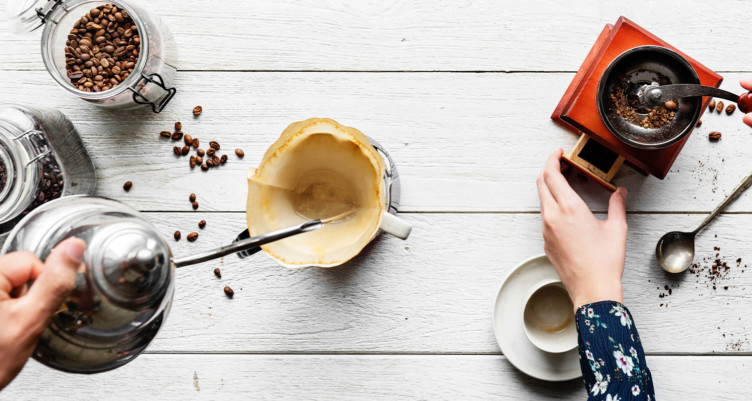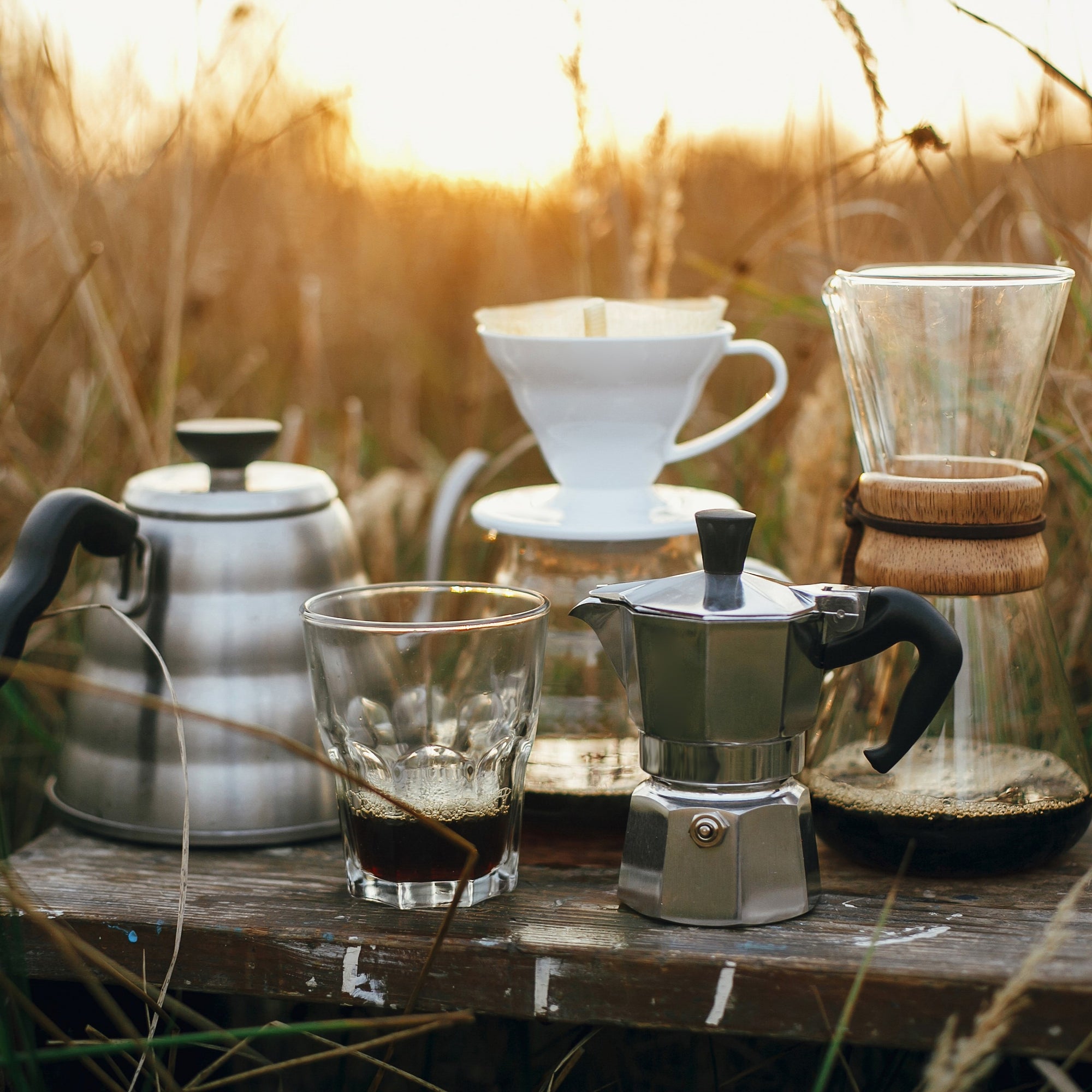Discovering the most effective Coffee Brewing Methods for Perfect Flavor Every Time
Discovering the most effective Coffee Brewing Methods for Perfect Flavor Every Time
Blog Article
The Scientific Research Behind Coffee Brewing: How Temperature and Time Affect Your Beverage
Recognizing the scientific research behind coffee developing reveals that temperature and time are not mere variables however pivotal elements that dictate the drink's flavor account and general high quality. The optimal developing temperature level commonly drops in between 195 ° F and 205 ° F, while the duration of extraction varies considerably across various approaches. This interplay of aspects can lead to a mug that is either fascinating or unsatisfactory. As we discover the subtleties of these components, the concern arises: how can one successfully balance temperature and time to achieve that ideal mixture?
The Chemistry of Coffee Removal
The chemistry of coffee removal digs into the detailed processes that transform raw coffee beans right into the fragrant beverage enjoyed worldwide. This makeover mostly entails the solubility of numerous compounds existing in the beans, which are affected by variables such as grind size, water top quality, and the developing technique utilized.
Throughout the developing procedure, warm water acts as a solvent, drawing out soluble substances, consisting of caffeine, lipids, acids, and sugars, from the coffee premises. Each compound contributes to the taste account, fragrance, and body of the last beverage. Acids are liable for zesty and bright notes, while oils contribute to a rich mouthfeel.
The preliminary stages of brewing extract acids and sugars, leading to a pleasurable level of acidity, while long term extraction can lead to anger due to over-extraction of undesirable substances. Understanding these chemical communications is critical for optimizing developing strategies, as the equilibrium between removal time and water temperature level can substantially influence the general quality of the coffee.
Suitable Developing Temperatures
Discovering the ideal developing temperature level is crucial for opening the full capacity of coffee tastes and scents - coffee brewing methods. Research study indicates that the optimum variety for brewing coffee exists in between 195 ° F to 205 ° F(90 ° C to 96 ° C) Within this array, the extraction procedure successfully liquifies the preferable soluble compounds in coffee beans, leading to a balanced and delicious cup
Brewing at lower temperature levels, such as listed below 195 ° F(90 ° C ), might lead to under-extraction, generating a weak and acidic mixture with muted tastes. Conversely, brewing at temperatures going beyond 205 ° F(96 ° C) can cause over-extraction, creating a extreme and bitter preference because of the extreme dissolution of unfavorable compounds, such as tannins.
Additionally, the suitable developing temperature can vary relying on the coffee bean type and roast level. Lighter roasts usually profit from somewhat greater temperature levels to improve their intricate taste accounts, while darker roasts might be better suited to lower temperature levels to reduce resentment.
Inevitably, preserving accuracy in developing temperatures is vital for attaining a harmonious equilibrium of tastes, making certain that every mug of coffee delivers an enjoyable sensory experience.
Influence of Developing Time
Developing time plays a pivotal function in figuring out the flavor profile and overall top quality of coffee. The extraction procedure, which influences the preference, aroma, and body of the beverage, is mostly depending on just how long the coffee premises touch with water. Shorter brewing times can cause under-extraction, causing a weak or sour flavor, as insufficient soluble compounds are liquified. Alternatively, extended developing can lead to over-extraction, where undesirable compounds are released, resulting in an astringent or bitter taste.
Optimal brewing time differs depending on the approach used and the work dimension of the coffee. For instance, a French press typically requires about 4 minutes, while espresso removal is normally finished within 25 to 30 secs. It is vital to adjust developing time in conjunction with various other variables, such as water temperature level and coffee-to-water ratio, to attain the preferred flavor account.
Understanding the influence of brewing time enables coffee lovers to refine their brewing techniques, inevitably improving the sensory experience of their mug (coffee brewing methods). With mindful interest to this variable, one can unlock the full possibility of the coffee, disclosing its one-of-a-kind attributes and subtleties
Brewing Approaches and Their Results

For example, approaches like French press and cool mixture permit a much longer steeping time, causing a fuller body and robust taste due to boosted extraction of oils and soluble solids. On the other hand, espresso developing utilizes high pressure and a shorter removal time, generating a concentrated shot that stresses intense tastes and a rich crema.
Pour-over methods, such as Chemex or V60, supply a more regulated extraction process, enabling the brewer to control circulation rate and water distribution, which can enhance brightness and clearness. At the same time, percolation methods cycle water via the coffee grounds several times, leading to a more powerful, frequently bitter flavor.
Finally, using paper filters versus steel filters can also impact the last taste; paper filters usually yield a cleaner Get the facts mug by capturing oils and fine bits, while steel filters allow more oils to pass through, adding to a fuller mouthfeel - coffee brewing methods. Understanding these subtleties can elevate the coffee experience dramatically
Tips for Improving Your Mixture
A well-executed mixture can change even the most basic coffee right into a remarkable experience. To achieve this, attention to detail is important. Start with top quality, newly baked beans, as their taste profile lessens with time. Grind the beans just prior to making to make the most of quality, ensuring the grind dimension matches your developing method-- coarser for French press and finer for coffee.
Water high quality plays a vital duty; usage filtered water complimentary from contaminations. The perfect brewing temperature level varies in between 195 ° F and 205 ° F(90 ° C to 96 ° C ) As well warm can blister the coffee, while as well awesome might under-extract tastes.
Timing is similarly essential. For immersion approaches, soaking for three to 5 minutes is optimum, whereas drip approaches normally take about 5 mins. Try out mixture times to discover your favored strength.

Final Thought
In summary, the elaborate connection in between temperature level and time is paramount in the coffee brewing procedure. Complying with ideal brewing temperatures between 195 ° F and 205 ° F, alongside specific timing tailored per technique, guarantees the preferred flavor profile is accomplished. Understanding these scientific principles empowers individuals to improve their developing methods, eventually leading to an extra balanced and enjoyable coffee experience. Proficiency of these variables is necessary for any type of coffee lover looking for excellence in their drink.
Understanding the scientific research behind coffee brewing reveals that temperature and time are not plain variables but pivotal aspects that dictate the drink's taste account and total high quality. Understanding these chemical interactions is vital for maximizing brewing strategies, as the balance navigate to these guys in between extraction time and water temperature can substantially affect the total top quality of the coffee.Developing time plays a critical role in establishing the taste account and general quality of coffee. By concentrating on these components-- bean high quality, grind dimension, water temperature, soaking time, and ratio-- you can Source elevate your coffee brewing procedure, resulting in a continually remarkable cup.
In summary, the complex relationship in between temperature level and time is critical in the coffee brewing process.
Report this page